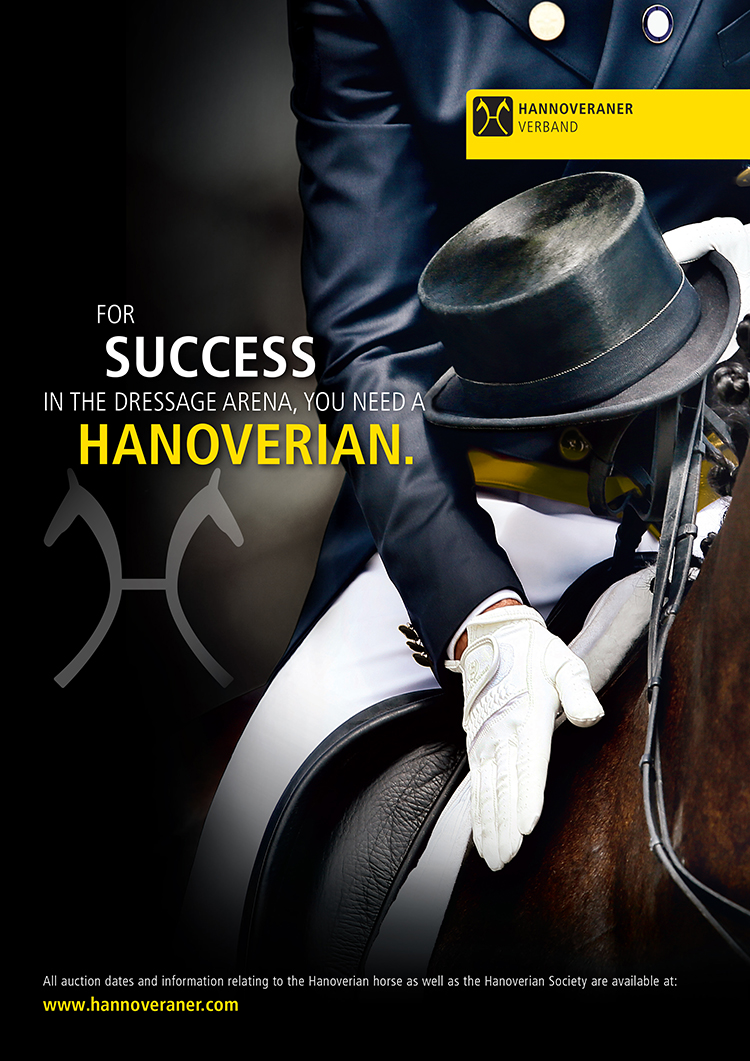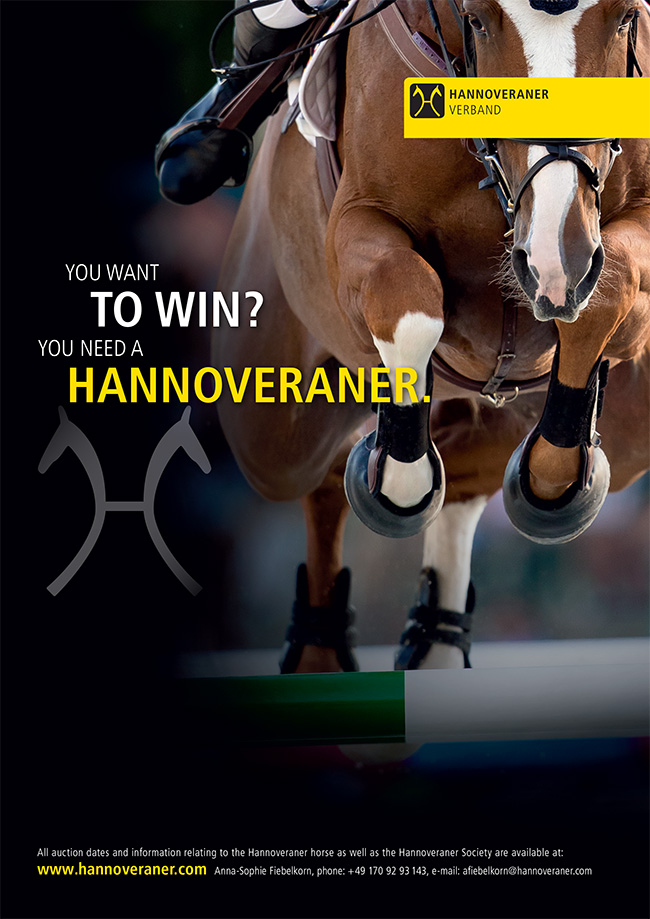Comments on the Evaluation of the Exterior of Sport Horses
By Dr Ludwig Christmann
The evaluation of the exterior of horses has always played a significant role in the breeding. It presents valuable conclusions about the quality and the use in young horses, and thus gives an indication on the value of the horse (and its offspring) as a riding horse in the respective disciplines.
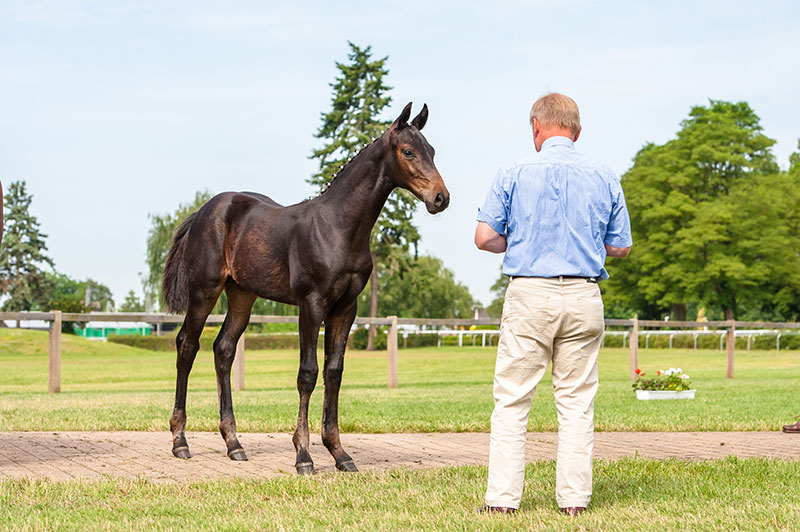
Evaluating horses is not exactly a science. Criteria on how a good riding horse should be constructed were developed through the experience of many generations of horse experts. We clearly strive to breed a typy horse, however the evaluation of the exterior focuses on the functionality of a horse more so than on its beauty.
The Hannoveraner Verband divides the evaluation of broodmares and stallions into six exterior components, all of which are scored between 1 (very bad) and 10 (excellent). The components are the head, neck, saddle position, frame, front legs and hind legs.
Head: From all the components, the evaluation of the head probably is the most subjective. Different breeds prefer different shapes of heads. There are some common ideals though. A big, clear, open eye is desirable, which radiates calmness and intelligence. This special radiance also influences the type of the horse.
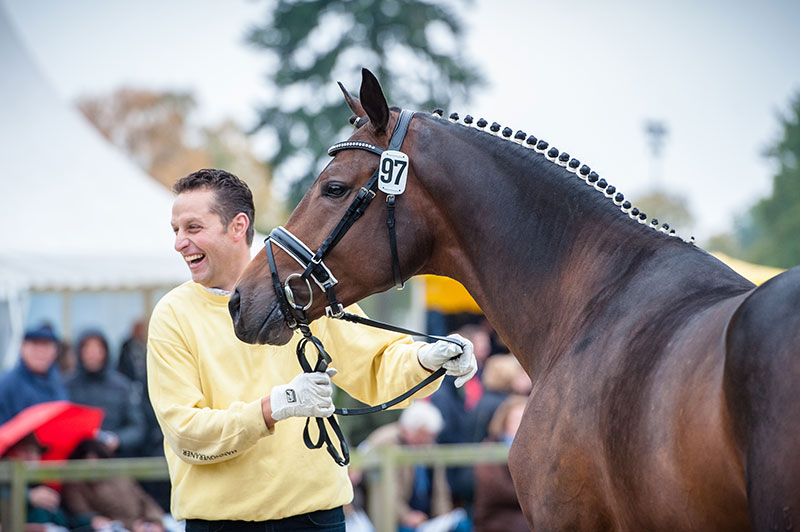
Neck: The horse uses the neck for balance while in motion in dressage as well as in jumping. The length and the shape of the neck are important. The neck should be of medium length and well developed without an under-neck. It should taper off towards the head; there should be a certain freedom in the jowl to allow for mobility in the poll. Unfavorable neck formations could cause problems with respect to a proper contact, which then will create problems with the rideability.
Saddle position: The position and the length of the shoulder as well as the development of the withers determine the quality of the saddle position. A long, angled shoulder and withers, which are not too high, but reach far into the back, are desirable. Such a construction helps placing the rider in the center of the horse. Hence a good saddle position is important for the balance of the horse, when under a rider. Shortcomings with respect to the construction of the shoulder may negatively impact the reach and the mobility in the shoulder of the horse.
Frame: The frame is a rather complex score and is often mistakenly connected with the size of the horse. When does a horse have a good frame?
- When we have a long, rectangular horse with correct proportions. The forehand (up to the end of the withers), the middle part (essentially the back) and the hindquarters should be of the same length. If that is the case, we are looking at a balanced horse.
• When the horse has a good topline. This requires the back to be strong, but elastic, especially in the connection over the loin area, where the middle part meets the hindquarters. The croup should be long and have the correct angulations. The croup of a jumper may be slightly straighter than the croup of a dressage horse, in which a slightly sloping croup is desirable.
• When the horse is long-legged and built uphill.
Evaluations have shown that the score for the frame relates to rideability and quality of movement more than any other score.

Front legs: The positioning of the legs has an immediate influence on the long-term health and usage of a horse. A correct foundation is essential for an athletic performance horse. Its criteria, which apply to front and hind legs, include strong, well-developed joints, a well-aligned formation of legs, and well-formed and correctly positioned hooves. The construction of the pasterns is of special importance. Sufficient elasticity in the pasterns adds to the elasticity of the movement. The pasterns need a certain length. However, if they are too long, they become weak and sagging when the horse is used for riding. They then create a significant risk for lameness issues.
Hind legs: Much of what was said about the front legs with respect to joints and correctness also applies to the hind legs. The hind legs are considered the engine of the horse. To be able to develop a powerful impulse out of the hind leg, certain construction attributes are useful. In addition to the definition of the joints, the angulation and the connection of the hind leg to the rest of the body are of utmost importance. If a hind leg stands too far out behind, the horse will have difficulties stepping under the point of gravity and carrying weight on this hind leg. A correct angle in the hock is of great significance, as it is the best prerequisite for creating a powerful impulse from the hind leg.
Type: The score for type covers two criteria: the breed and the gender. The type of the Hanoverian breed has changed considerably over the course of decades, because the use of the Hanoverian Horse changed. Today we breed horses for the various disciplines the equestrian sport offers. The horses must have athletic ability, have nice long bodylines and, at the same time, be blood-influenced and versatile.
The gender type stands for stallions being masculine and mares feminine.

Here the aspired exterior comes into action: Woodlander-Farouche by Fuerst Heinrich/Dimaggio, double world champion of five- and six-year-old dressage horses. – A perfect exterior provides the perfect pre-disposition as a riding horse and thus makes the goal for every breeder. (Photo: Frieler)
We do not want to breed statues; hence it is always important to evaluate the exterior not only while the horse is standing still. We get a valuable first impression, when the horse stands in front of us, but it is of utmost necessity to then view the horse in motion. It will allow us to evaluate how the horse carries itself, how it handles its body, and how the construction attributes, which we evaluated at a standstill, now influence the movement. To judge the correctness and the hooves, it is furthermore advisable to evaluate the horses while they move on a hard surface and not for example in deep sand or high grass.
The provided description outlines the composition the Hannoveraner Verband is aiming for in the Hanoverian Horse. These attributes are strived for as they support the functionality, ability to perform, and health of a sport horse. Besides evaluating whether the horse fulfils these criteria or not, horse evaluation also serves to identify potential strengths and weaknesses that a rider/trainer should prepare for, when buying a horse as well as when training a horse. Especially for the latter, an educated eye and appropriate training to overcome an existing weakness serve to improve a horse’s capabilities and help to keep the horse healthy.
Video: https://www.youtube.com/watch?v=P-9vCPWHBto
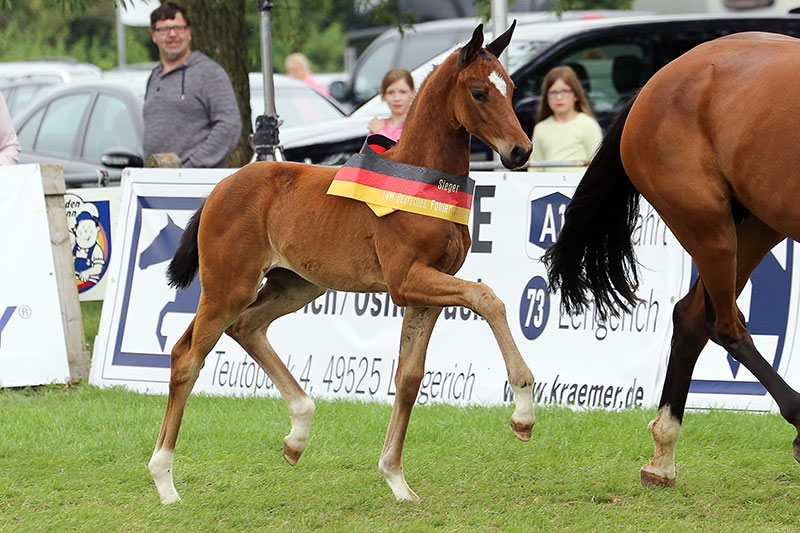
German Champion Foal 2017 in Lienen: No. 62 Be my Beauty Queen by Bonds/San Amour.
Foto: LL-Foto.de
Verden Auction on August 4/5 – Foals and Broodmares
For the second time, the Verden Auction for foals and broodmares will be held at the same time as the Verden International. We have five days of top riding sport for the public.
We also have two days, running at the same time as the equestrian festival, a foal and broodmare auction with very popular bloodlines. There will be a presentation for the foals and broodmares on Friday, 4th, and on Saturday, 5th. Following the presentations on both days the foals and broodmares will be auctioned to the public. The auction will be held both days at 6pm in the Niedersachsenhalle.



